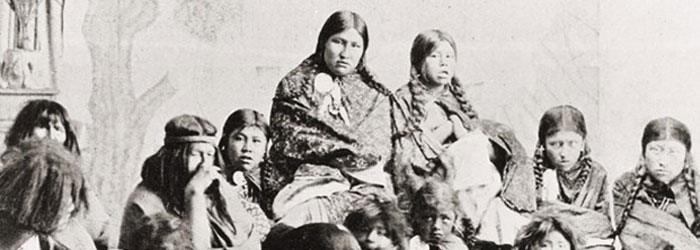Economy
The Tehuelche’s main prey was guanaco, and the people prized not only the meat but also the skins, which they used to make clothing, blankets, dwellings and other basic necessities. They hunted these animals using bolas, surrounding their prey in a semi-circle with the help of horses and dogs. The people also gathered edible and medicinal plants, as well as seafood from the coast. Tehuelche women were responsible for domestic tasks (collecting firewood and water for cooking), and the set up and dismantling of their transportable shelters. They raised the children, cured the skins and manufactured some implements. Tehuelche women also decorated the tribe’s blankets, bags, belts and playing cards. The men took care of hunting and manufacturing tools and weapons, but they also spent quite a lot of time eating, resting and playing games. The incorporation of horses into the Tehuelche way of life in the 18th century caused some major changes in their economy. The people began to include horse meat and blood (preferably mares’ blood) in their diet, especially through rituals and sacrifices. The northern Tehuelche groups used the tendons, bones and skin of this animal to produce household items and to cover their dwellings, replacing the guanaco skins formerly used. The horse tack the Tehuelche manufactured became more and more elaborate over time, eventually evolving into a major artistic form. The adoption of horses also allowed the Tehuelche to extend their hunting range and thus secure a regular food supply. This extended range also led the Tehuelche further afield, where they came into contact—and sometimes into conflict—with other ethnic groups. At any rate, these interactions stimulated trade in goods such as Mapuche textiles from Nahuel Huapi. The Tehuelches’ contact with Europeans developed over time from occasional bartering to regular trade in established locations. One such place was the Dinamarquero archeological site in the Magallanes region.


